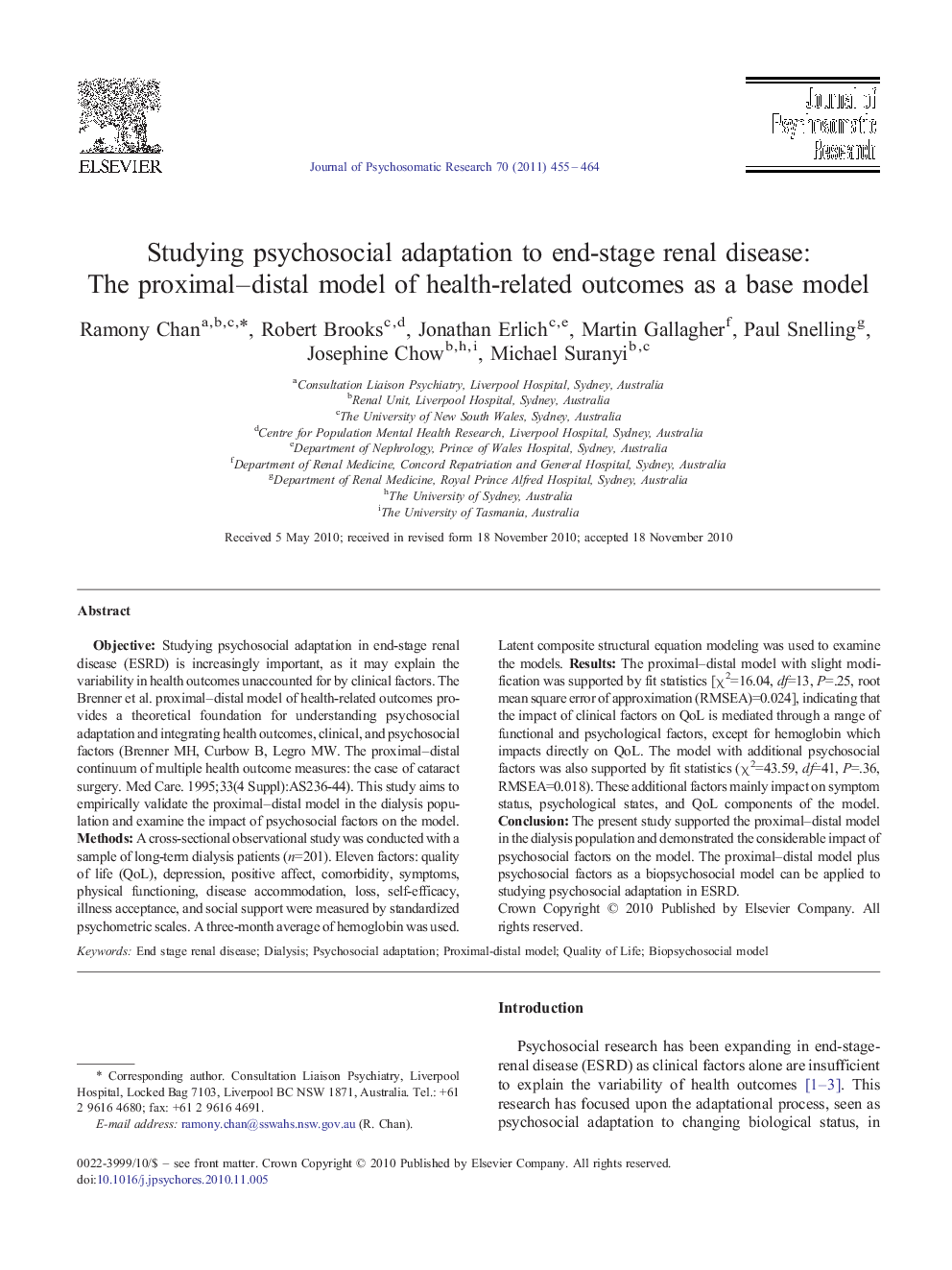| کد مقاله | کد نشریه | سال انتشار | مقاله انگلیسی | نسخه تمام متن |
|---|---|---|---|---|
| 949954 | 926797 | 2011 | 10 صفحه PDF | دانلود رایگان |

ObjectiveStudying psychosocial adaptation in end-stage renal disease (ESRD) is increasingly important, as it may explain the variability in health outcomes unaccounted for by clinical factors. The Brenner et al. proximal–distal model of health-related outcomes provides a theoretical foundation for understanding psychosocial adaptation and integrating health outcomes, clinical, and psychosocial factors (Brenner MH, Curbow B, Legro MW. The proximal–distal continuum of multiple health outcome measures: the case of cataract surgery. Med Care. 1995;33(4 Suppl):AS236-44). This study aims to empirically validate the proximal–distal model in the dialysis population and examine the impact of psychosocial factors on the model.MethodsA cross-sectional observational study was conducted with a sample of long-term dialysis patients (n=201). Eleven factors: quality of life (QoL), depression, positive affect, comorbidity, symptoms, physical functioning, disease accommodation, loss, self-efficacy, illness acceptance, and social support were measured by standardized psychometric scales. A three-month average of hemoglobin was used. Latent composite structural equation modeling was used to examine the models.ResultsThe proximal–distal model with slight modification was supported by fit statistics [χ2=16.04, df=13, P=.25, root mean square error of approximation (RMSEA)=0.024], indicating that the impact of clinical factors on QoL is mediated through a range of functional and psychological factors, except for hemoglobin which impacts directly on QoL. The model with additional psychosocial factors was also supported by fit statistics (χ2=43.59, df=41, P=.36, RMSEA=0.018). These additional factors mainly impact on symptom status, psychological states, and QoL components of the model.ConclusionThe present study supported the proximal–distal model in the dialysis population and demonstrated the considerable impact of psychosocial factors on the model. The proximal–distal model plus psychosocial factors as a biopsychosocial model can be applied to studying psychosocial adaptation in ESRD.
Journal: Journal of Psychosomatic Research - Volume 70, Issue 5, May 2011, Pages 455–464